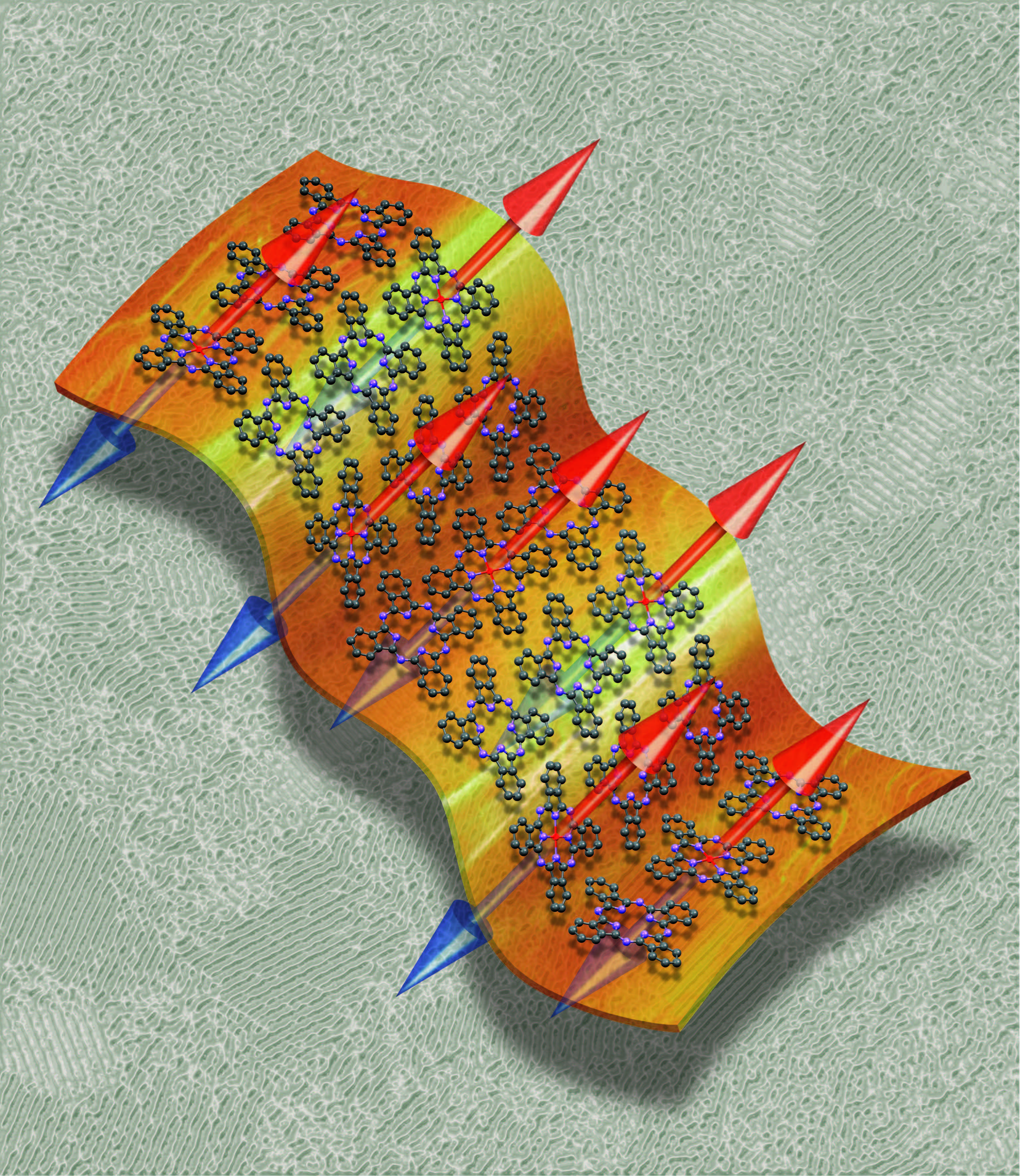Spintronics Goes Through Blue Period

A dye used in ink, paint and in the blue livery of British Rail could be key to building future computing devices and exploring quantum mechanics.
It's called copper pthalocyanine. A team of scientists in the U.K. used it to explore spintronics, the manipulation of electron spins. Electrons can have one of two spin states, "up" or "down," and that spin state can be used to store bits of information, just as electric charge is used in conventional computers.
In a typical laptop changing the state of a bit from 1 to 0, on or off, generates heat. Spintronic computers would create a lot less, allowing circuits to be smaller. Spintronics is also an avenue to quantum computing, since the spins of individual electrons obey the laws of quantum mechanics and can be in two states at once, increasing a computer's storage and calculating power. [Twisted Physics: 7 Mind-Blowing Findings]
Spin states
In their experiment, lead study author Marc Warner, now a research fellow at Harvard University, and Gabriel Aeppli, director of the London Center for Nanotechnology, vaporized a sample of copper phtalocyanine, or CuPc. The vapor condensed onto a substrate, in an ultra-thin layer. Each molecule of the dye consists of a copper atom surrounded by nitrogen atoms and rings of carbon.
They then put the dye in a magnetic resonance spectrometer, which works in a way similar to a microwave oven, but is much more precise – it generates very short pulses of microwaves, just a few ten-billionths of a second long. The copper atoms all have a single electron in their outer shells, and the microwave pulses create a magnetic field that aligns the electron's spin, putting it into an "up" or "down" state. In a computer, that would be the equivalent of writing data. The "bits" could be "read" by measuring the spin state.
Because the electron spins obey the laws of quantum mechanics, though, they can be both up and down at the same time, taking on no definite value until they are observed.
Sign up for the Live Science daily newsletter now
Get the world’s most fascinating discoveries delivered straight to your inbox.
Spin experiments have been done before. What surprised Warner and Aeppli was how long a given spin stayed aligned with the external magnetic field, and how long the superposed states, or the state in which an electron is both "up" and "down" at the same time, lasted. Both were much longer than usual, in a material that is relatively cheap and easy to process.
At 5 degrees Kelvin, or minus 450 degrees Fahrenheit, the spins stayed parallel to the field for 59 milliseconds, and the superposed state lasted 2.6 milliseconds. Raising the temperature decreased those times.
"It was a longer period than we had any right to expect," Aeppli said.
"There are other materials that massively exceed that," Warner told LiveScience. "But those materials have some relative disadvantages."
Whereas millisecondsmay not seem like much, a typical laptop computer works on timescales smaller than that — billions of processesper second are typical for most modern processors. [The Evolution of Computers: 1882 to Present]
Big step forward
Even so, the bits are not quite as useful as they need to be — yet. Warner noted that it's not clear yet how long a quantum bit would have to maintain its superposed state in a real quantum computer, but this kind of work can help figure that out. "A theorist might say we need a qubit with a lifetime of minutes, but in practice it is never entirely clear what is and isn't possible in a particular system."
Michael Flatté, professor of physics at the University of Iowa and an expert on spintronics, said the use of CuPc and the longevity of the bits was a big step forward. "This showed you can get long decoherence times in a plastic setting," said Flatté, who wasn't involved in the study. "It has an advantage over using defects in diamond," he said, referring to another material used in spintronics. "You get long spin coherence times, but you're not going to process diamond as easily."
More work will have to be done to get the spins to stay aligned longer and the superposed states to last. Aeppli said his lab plans to do more experiments with other elements, such as cobalt, that fit into organic molecules similar to CuPc. "There's a huge variety of these molecules," he said. "You can dial in different atoms. It's like Lego — having a lot of bricks."
Follow LiveScience on Twitter @livescience, Facebook & Google+. Original article on LiveScience.com.











